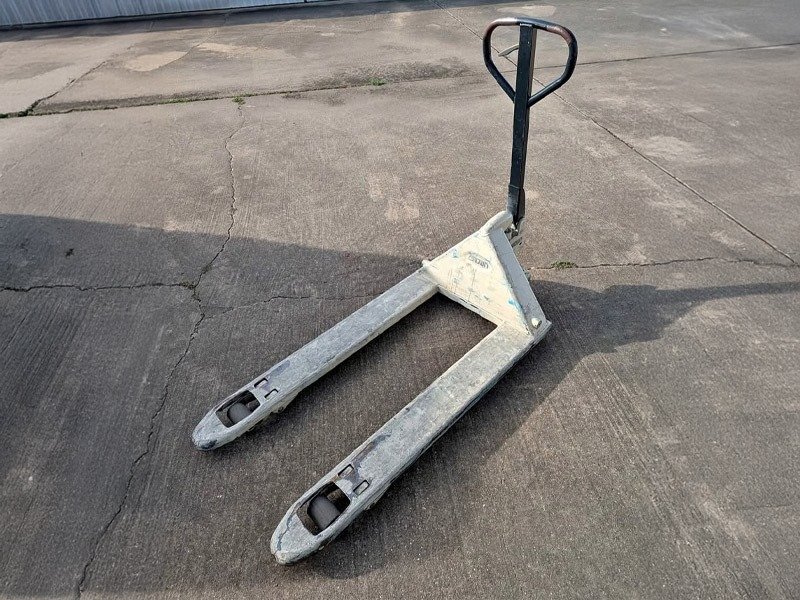Order pickers are the workhorses of modern warehouses, enabling operators to efficiently retrieve items from high shelving while maintaining productivity and safety standards. However, like any heavy-duty equipment, these vertical lift trucks require consistent maintenance to operate at peak performance and avoid costly downtime.
Understanding Order Picker Components
Order pickers combine the lifting capabilities of a forklift with the precision needed for individual item selection. Key components include the mast assembly, hydraulic systems, electrical controls, drive motors, and operator platform. Each system requires specific maintenance attention to ensure reliable operation.
The mast assembly bears the primary load and experiences constant stress during lifting operations. Regular inspection of the mast rails, chains, and lift cylinders helps identify wear patterns before they lead to failure. Hydraulic systems require particular attention, as fluid contamination or component wear can result in erratic lifting behavior or complete system failure.
Preventive Maintenance Scheduling
Establishing a structured maintenance schedule is crucial for order picker longevity. Daily inspections should include checking hydraulic fluid levels, examining mast components for damage, testing safety systems, and verifying that all controls respond properly. Operators should also inspect the platform for damage and ensure that safety rails and gates function correctly.
Weekly maintenance tasks typically involve more thorough inspections of electrical connections, battery terminals (for electric models), and drive system components. Monthly maintenance should include hydraulic system pressure testing, detailed mast inspection, and comprehensive safety system verification.
Common Maintenance Issues
Order pickers face several recurring maintenance challenges. Hydraulic system problems top the list, often manifesting as slow lifting speeds, jerky operation, or fluid leaks. These issues frequently stem from contaminated hydraulic fluid, worn seals, or damaged cylinders.
Electrical system problems are also common, particularly in older units. Corroded connections, worn switches, and battery-related issues can cause intermittent operation or complete failure. The constant vibration and movement inherent in order picker operation can loosen electrical connections over time.
Mast wear represents another significant concern. The repeated lifting and lowering cycles, combined with side loads from reaching operations, can cause premature wear of mast components. Chain stretch, roller wear, and rail damage can affect lifting precision and safety.
Parts Procurement and Quality Considerations
When maintenance identifies worn or damaged components, sourcing quality replacement parts becomes critical. While OEM parts ensure perfect fit and performance, they’re not always the most cost-effective solution, especially for older equipment. High-quality aftermarket forklift parts can provide excellent performance at reduced costs, helping warehouses maintain their order pickers without breaking maintenance budgets.
The key to successful aftermarket part utilization lies in sourcing from reputable suppliers who understand the specific requirements of order picker applications. Quality aftermarket components can match OEM performance while offering faster delivery times and competitive pricing.
Maintenance Best Practices
Successful order picker maintenance programs share several common characteristics. First, they emphasize operator training, ensuring that users understand proper operating techniques and can identify potential problems early. Well-trained operators are often the first line of defense against equipment problems.
Documentation plays a crucial role in effective maintenance programs. Detailed maintenance records help identify patterns, predict component life cycles, and plan maintenance activities efficiently. Digital maintenance management systems can streamline this process and provide valuable analytics.
Environmental factors significantly impact maintenance requirements. Order pickers operating in cold storage environments face unique challenges from condensation and temperature extremes. Dusty environments require more frequent filter changes and component cleaning. Understanding these environmental impacts helps tailor maintenance programs to specific operational conditions.
Safety Considerations
Order picker maintenance must prioritize safety above all other considerations. Working at height amplifies the consequences of equipment failure, making thorough maintenance critical. Safety systems including platform gates, emergency lowering controls, and tilt alarms require regular testing and immediate attention when problems arise.
Maintenance personnel should follow lockout/tagout procedures when servicing order pickers, particularly when working on hydraulic or electrical systems. Proper lifting techniques and fall protection equipment are essential when performing maintenance tasks on elevated components.
Cost-Effective Maintenance Strategies
Balancing maintenance costs with equipment reliability requires strategic thinking. Condition-based maintenance, which uses equipment monitoring to determine maintenance timing, can reduce unnecessary servicing while catching problems before they cause failures.
Building relationships with reliable parts suppliers helps ensure quick access to necessary components while controlling costs. Maintaining strategic inventory of critical wear items can minimize downtime when failures occur.
Training internal maintenance staff on order picker systems reduces dependence on external service providers for routine maintenance tasks. However, complex repairs and safety-critical work should remain with qualified professionals.
Technology Integration
Modern order pickers increasingly incorporate technology that can enhance maintenance programs. Telematics systems provide real-time equipment monitoring, usage tracking, and fault code reporting. This data enables proactive maintenance scheduling and helps identify operational issues before they cause equipment damage.
Fleet management software can integrate maintenance scheduling with operational planning, ensuring that maintenance activities minimize disruption to warehouse operations. Some systems can even predict component failures based on usage patterns and historical data.
Conclusion
Effective order picker maintenance requires a comprehensive approach that combines scheduled preventive maintenance, quality parts procurement, operator training, and safety focus. By implementing structured maintenance programs and leveraging quality replacement components from reliable suppliers, warehouses can maximize order picker uptime while controlling maintenance costs.
The investment in proper maintenance pays dividends through reduced downtime, extended equipment life, and improved workplace safety. In today’s competitive warehouse environment, well-maintained order pickers are essential for maintaining the efficiency and productivity that customers demand.

